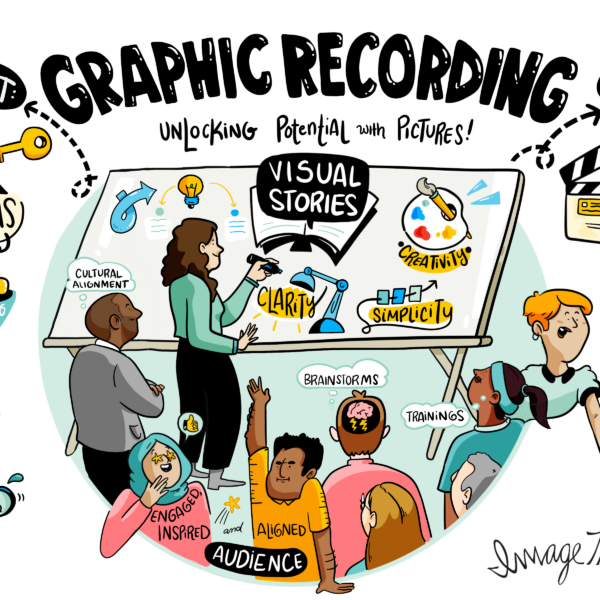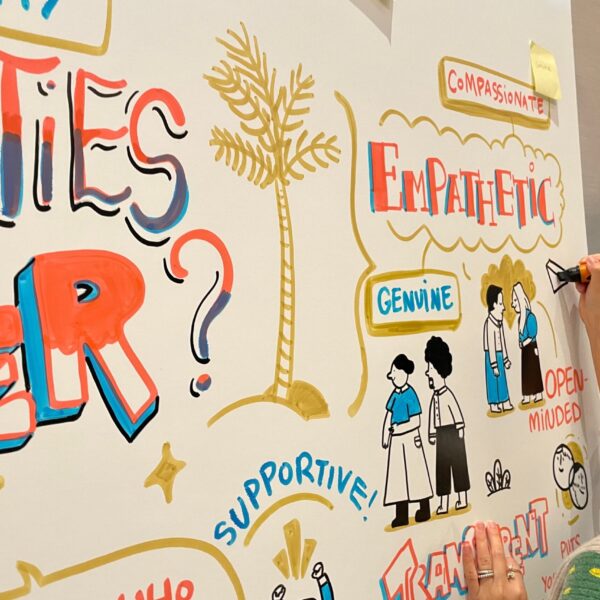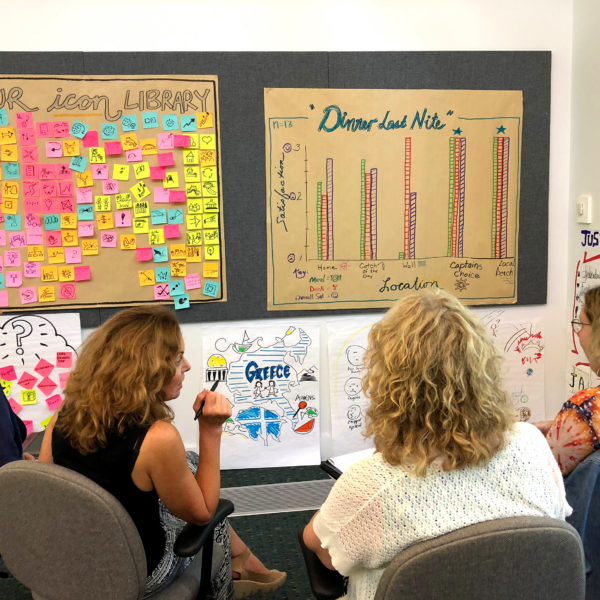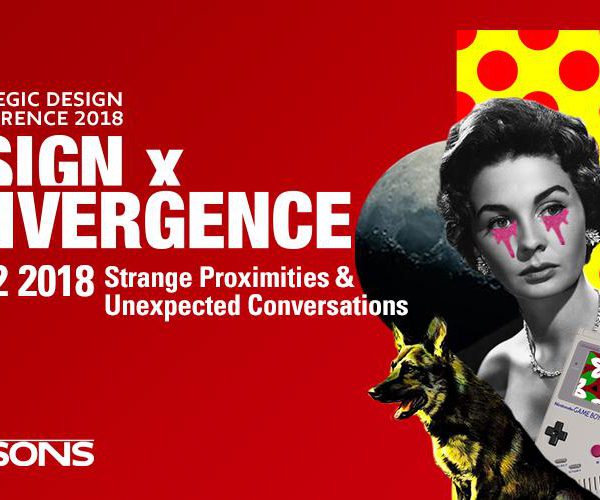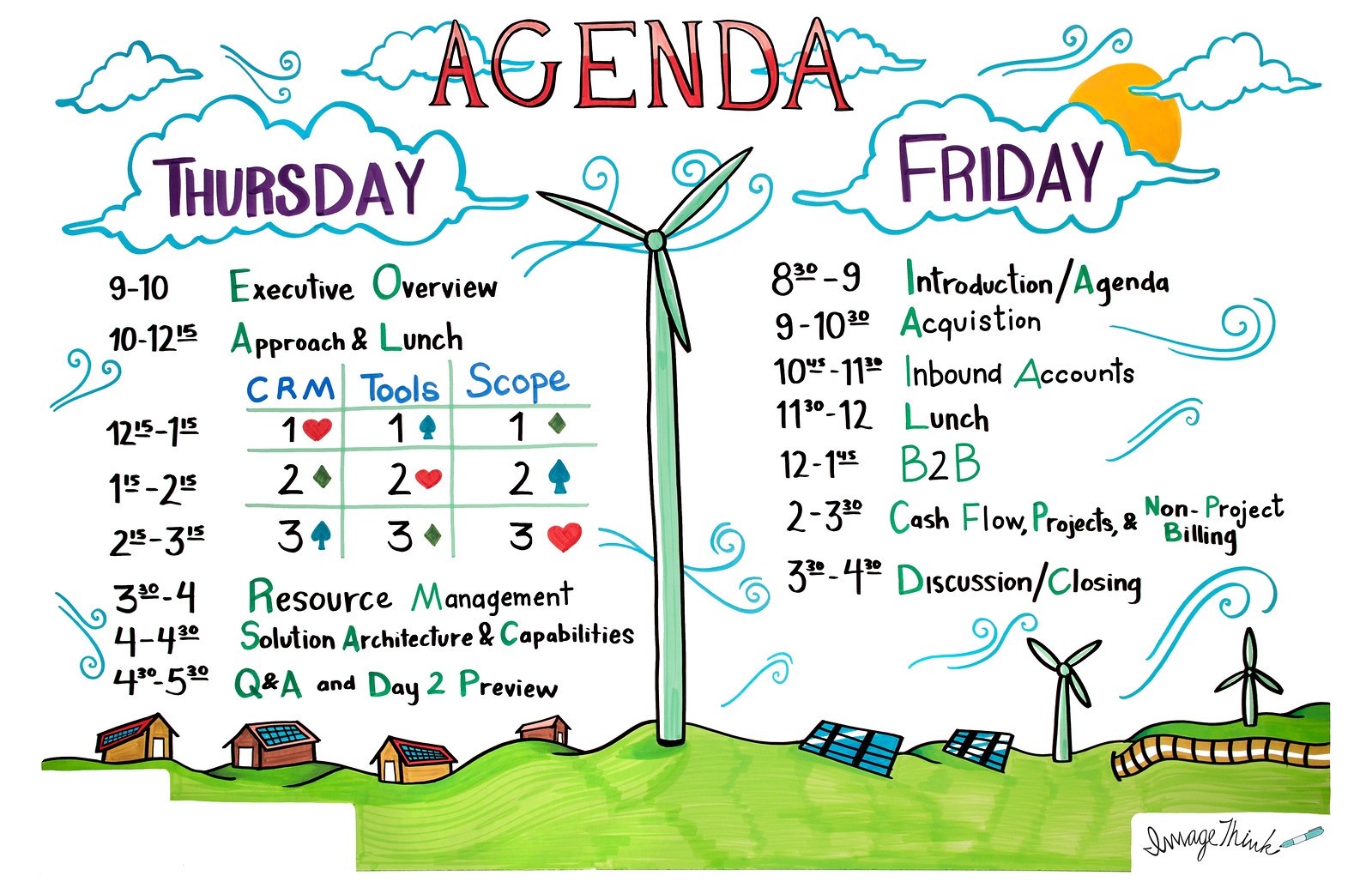
ImageThink’s approach to writing a good agenda is steeped in design thinking philosophy, visual theory, and our own ImageThink Method. Applying these principles to our client’s most important challenges, we build tailored, ambitious, and achievable agendas for their biggest meetings.
Successful by DESIGN:
Creating a good meeting agenda begins with identifying what needs to be discussed, and this is one area where our devotion to design thinking principles is helpful. In a nutshell, design thinking is a human-centric methodology for problem solving. In practice, this means identifying a goal for the meeting rooted in solving a specific business challenges for specific individuals, departments, or organizations.
We’ve found that it is easiest to set agenda goals by asking a series of questions. What benchmarks need to be hit? What are the existing pain points? What were successes and areas for improvement? It’s important to frame your questions appropriately. Too broad of an inquiry can be insurmountable, while being too specific can result in narrow group-think.
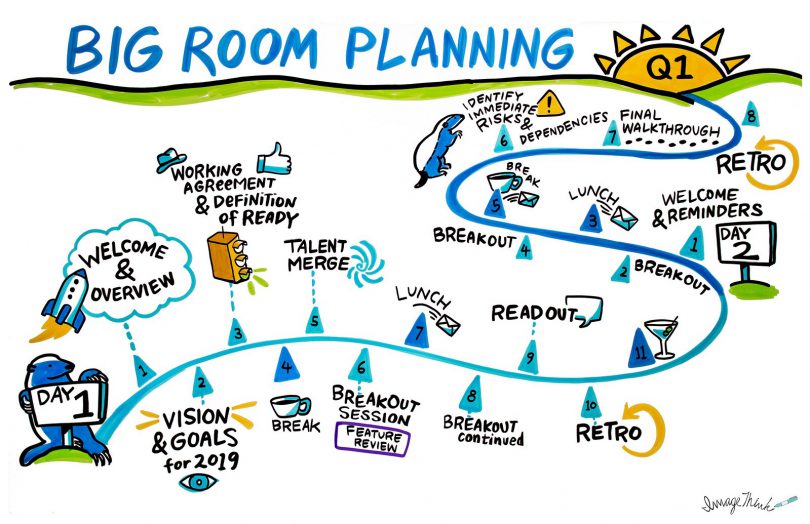
These deceptively simple questions encourage thinking critically about the meeting and can actually kickstart meeting prep. What’s more, framing goals as clear questions is useful in determining who to include in the meeting. Assembling the right, engaged group can avoid wasted time and increase participation.
Another crucial step in agenda design that we’ve cribbed from the design thinking manual is the emphasis on iteration, evaluation, and repetition. The design thinker is ever nimble, ever curious, and ever flexible. We believe your meetings should be as well.
We always strive to accurately schedule time for meeting topics, however, we also encourage clients to allow for deviations. Whether to tug on a particularly interesting string of thought, examine a newly discovered challenge, or debate opposing points of view, there’s no point bringing together your organization’s best minds only to shut them down with a buzzer.
PICTURE the perfect meeting:
In addition to incorporating design thinking elements, ImageThink is proudly passionate about the role visuals play in igniting your team’s most creative pathways. We’ve written extensively about the power of images to aid retention and memorability of a session, and as a tool to jumpstart group creativity.
But how do you bring illustration and images into your meeting’s agenda?
Start small! To begin with, we know that not everyone went to art school, or is as confident with a marker as our graphic recorders. That said, color coding your agenda, can be a helpful way for attendees to get a sense of what topics seem the most important to the meeting organizers in advance. Additionally, laying out the schedule visually, even using simple blocks in Excel, can help communicate the meeting’s structure, and what topics get the most time.
Another way ImageThink facilitates bringing drawing into client meetings is to use visual templates as a supplement to the agenda. Common templates we work with, like a journey map or an empathy map, can be prepared in advance, and take the pressure of live-drawing out of the equation.
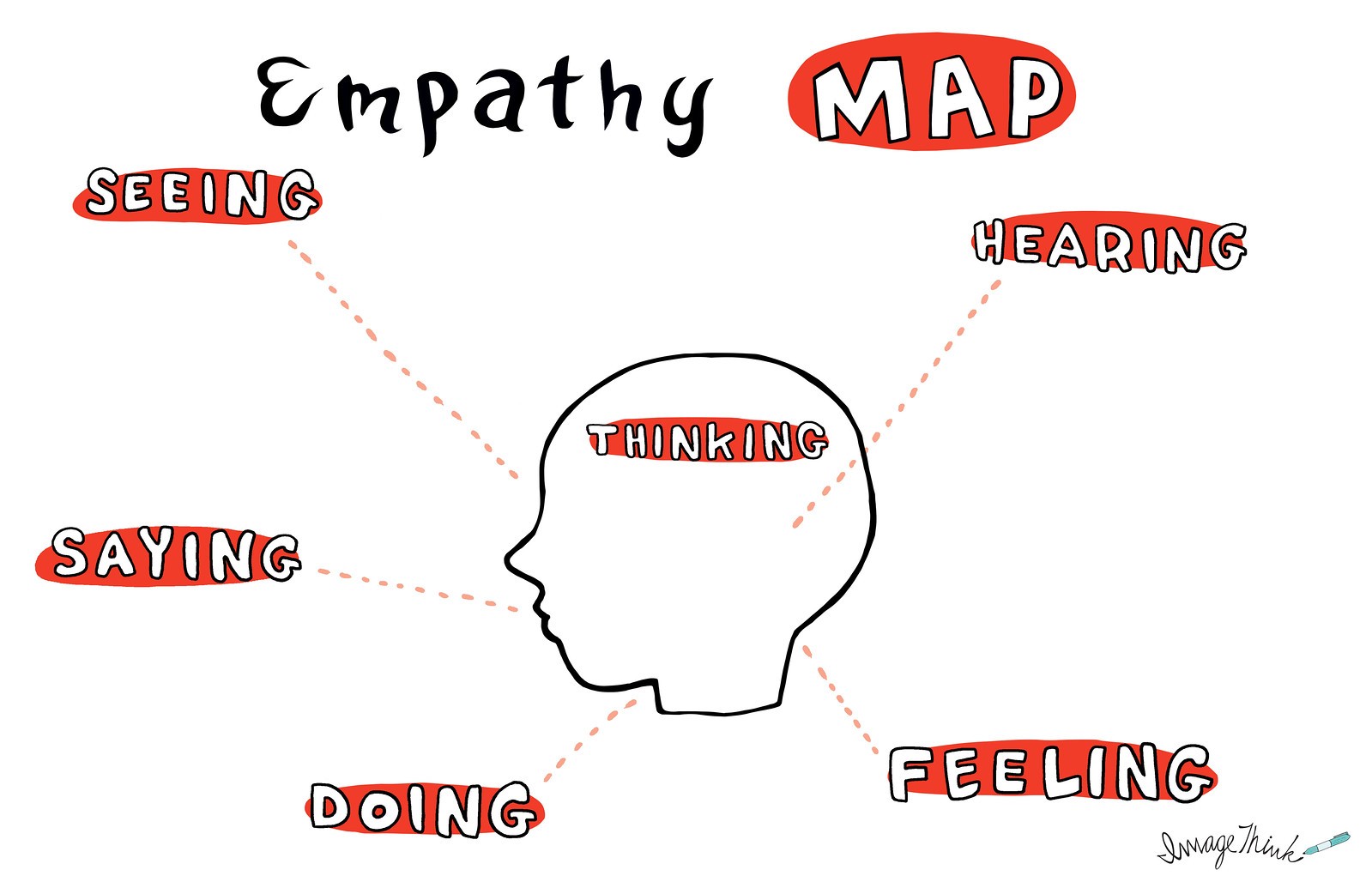
We also suggest planning some time and activities to engage participants through drawing. These can be creating personal visual bios, illustrating some of your organization’s core values, or The Squiggle Game. Drawing activates a different region of the brain than writing or talking, and can inspire creativity.
Finally, we’d be remiss if we didn’t mention recording and memorializing (with pictures!) your insights and decisions. Hiring a graphic recorder to listen and synthesize your biggest ideas in real time can feel like a big investment, but the materials and visuals generated, not to mention the added memorability and interactivity that a graphic recorder inspires, provide value long after the meeting ends.
There’s an IMAGETHINK METHOD to our madness:
In our 10 years working with some of the largest companies in the world, ImageThink has defined six phases into which most projects can be categorized. In addition to design thinking and Visual theory, the agendas we create are informed by a client’s placement within The ImageThink Method.
Whether your organization is scanning for insights, strategizing a plan of attack, or reflecting on a project gone by determines the best questions to ask and the appropriate tools for our graphic recorders and graphic facilitators to offer. The Method is also helpful in defining realistic expectations and a manageable scope for a project.
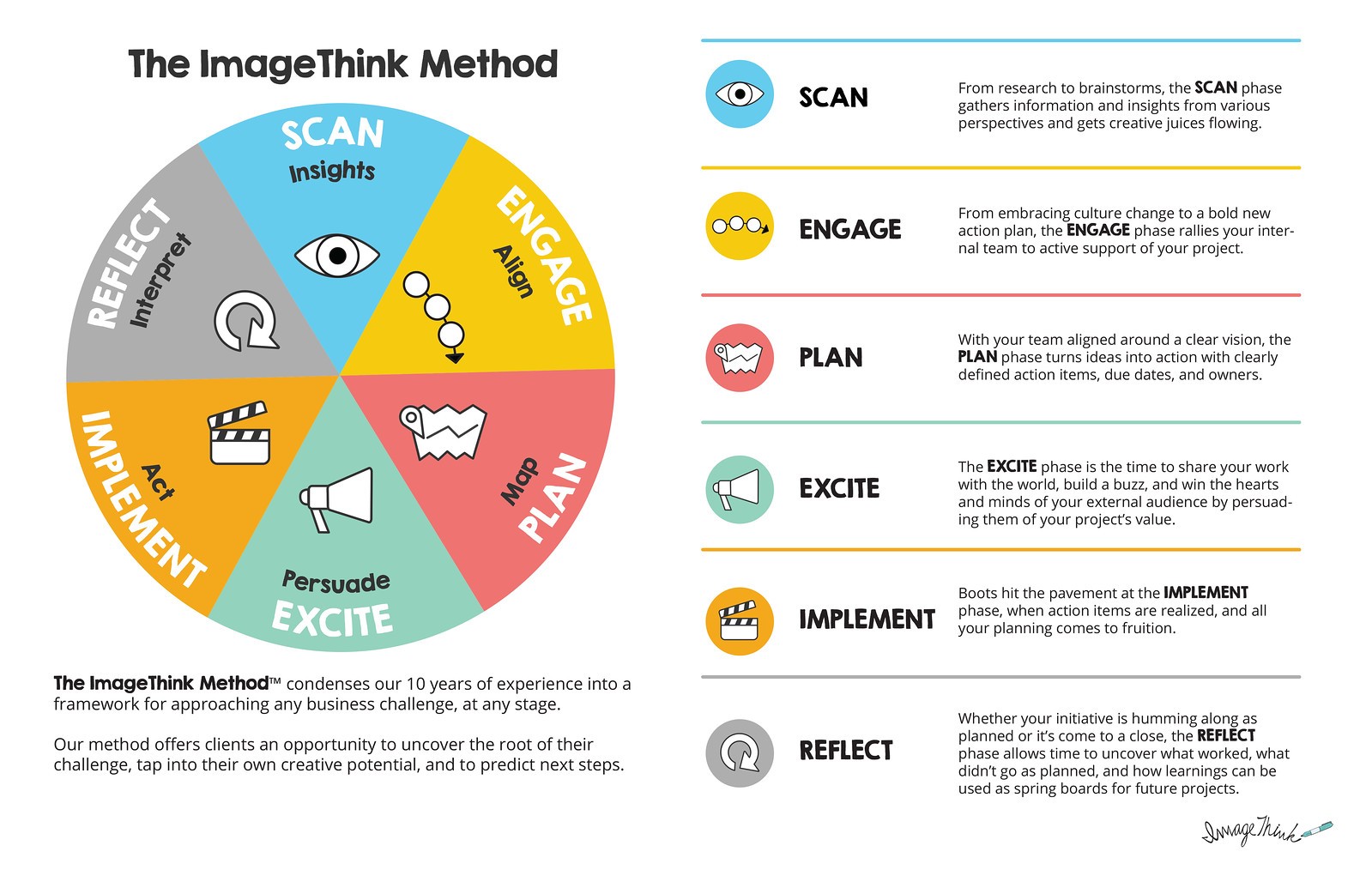
It can be a lot of work to design an agenda, and unfortunately, it’s often the kind of work that gets overlooked, or deemed unnecessary when everyone on the team is busy. However, we’ve seen the dividends good planning can pay in countless client engagements. We feel it’s one of the greatest services we offer our clients.
On that note, hopefully this look into our process is helpful in preparing for your next meeting. Give us a call – we’re happy to share some of our expertise to help you create your next agenda.
